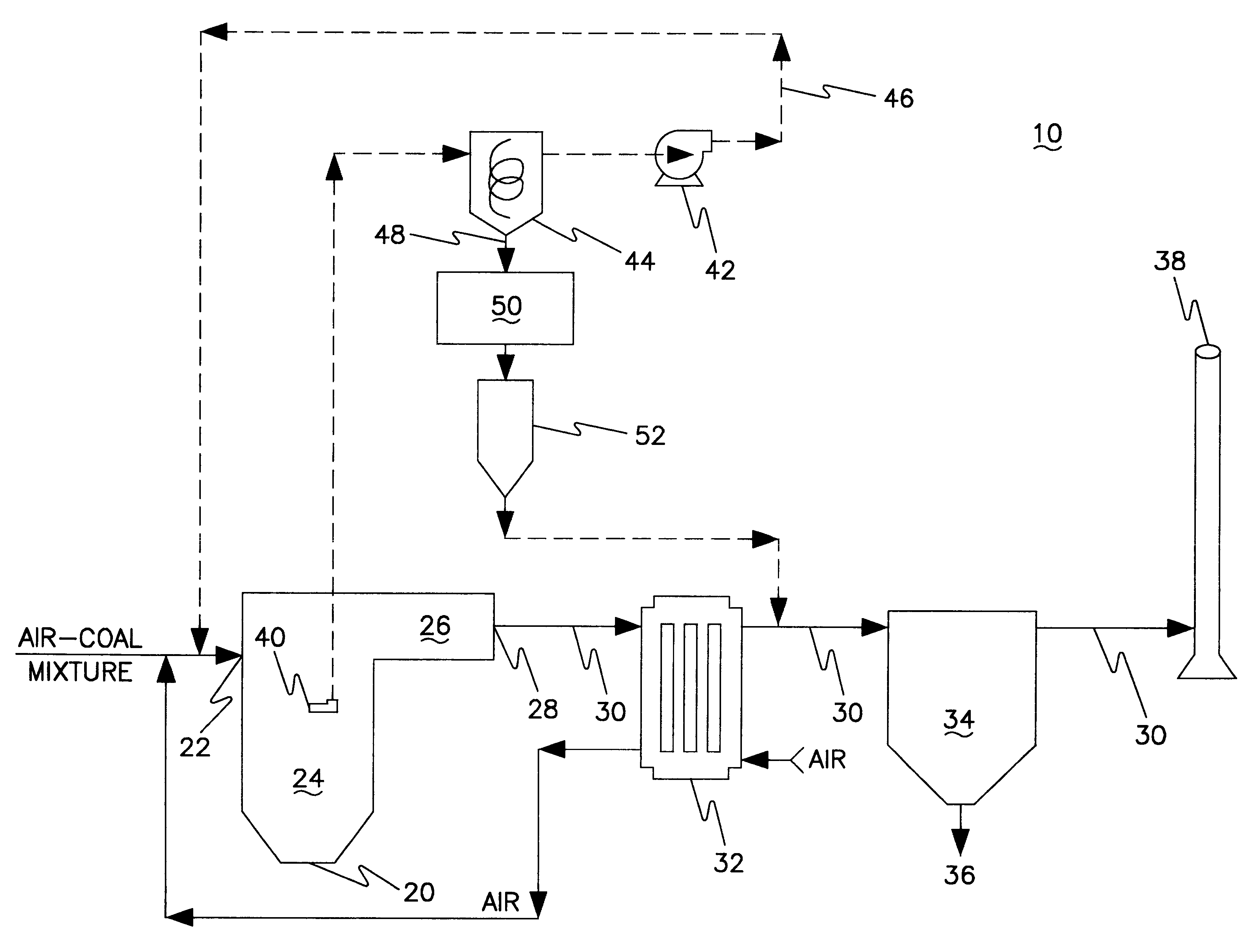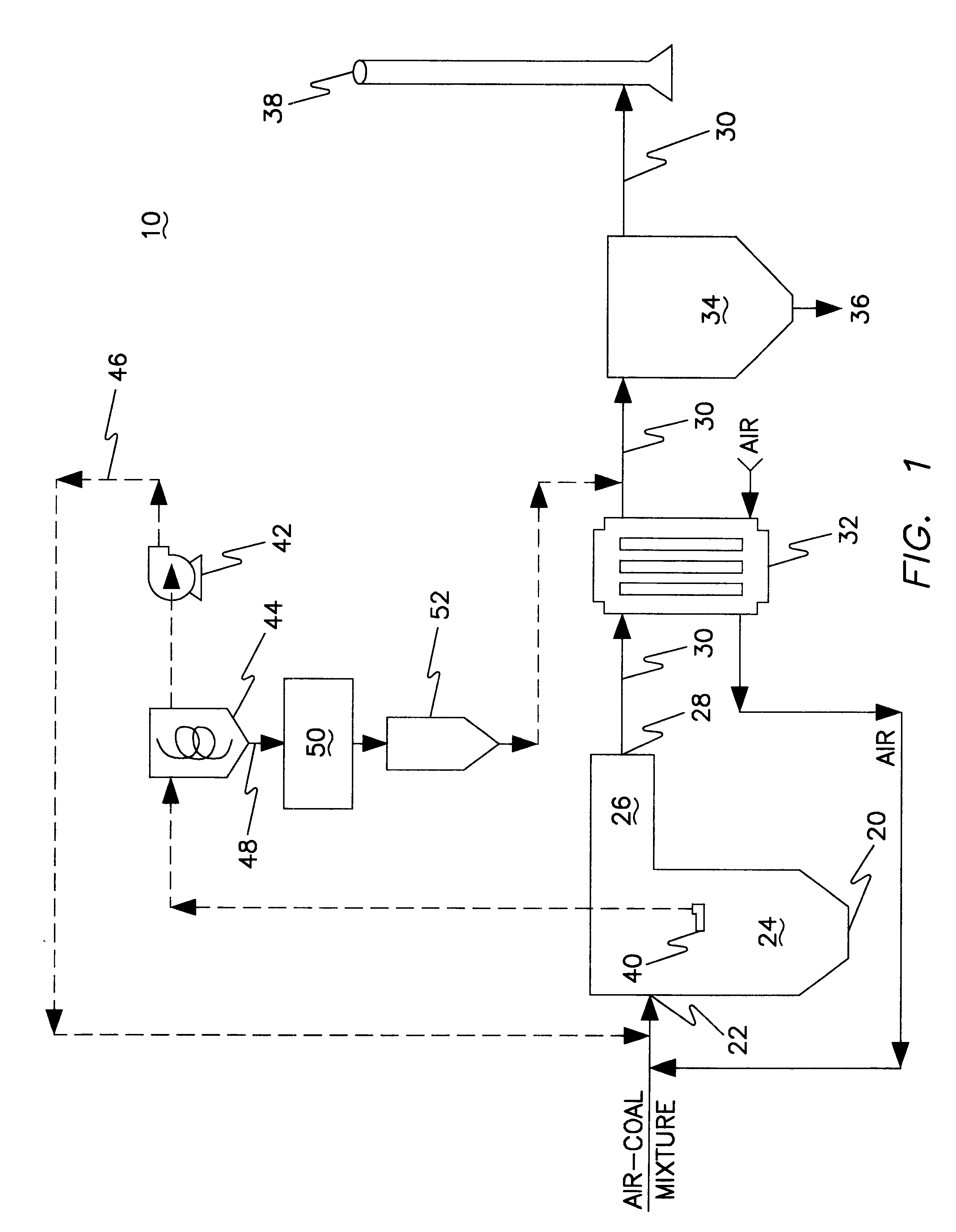Thief process for the removal of mercury from flue gas
a technology of flue gas and mercury, which is applied in the direction of separation processes, emission prevention, lighting and heating apparatus, etc., can solve the problems of inability to alter the characteristics of carbon extracted from fly ash without significant physical and/or chemical treatment, and the projected annual cost of an activated carbon cleanup process is extremely high, so as to reduce the heat rate penalty, eliminate sorbent contamination, and increase the utilization of sorben
- Summary
- Abstract
- Description
- Claims
- Application Information
AI Technical Summary
Benefits of technology
Problems solved by technology
Method used
Image
Examples
example 2
In a pilot-scale study, a thief sample from Evergreen coal was injected into the duct work as Evergreen coal was being combusted. The sorbent had actually been obtained from a thief located in the combustor of the pilot facility. Flue gas samples were collected and analyzed for mercury content. Samples were taken from the duct work both before and after the particulate collection device. Performance of the Evergreen-derived sorbent was compared to flue gas samples taken at the same locations when no sorbent had been injected into the duct work of the plant. Results from the pilot scale study are summarized in Table 2.
PUM
| Property | Measurement | Unit |
|---|---|---|
| temperature | aaaaa | aaaaa |
| temperature | aaaaa | aaaaa |
| temperatures | aaaaa | aaaaa |
Abstract
Description
Claims
Application Information
 Login to View More
Login to View More - R&D
- Intellectual Property
- Life Sciences
- Materials
- Tech Scout
- Unparalleled Data Quality
- Higher Quality Content
- 60% Fewer Hallucinations
Browse by: Latest US Patents, China's latest patents, Technical Efficacy Thesaurus, Application Domain, Technology Topic, Popular Technical Reports.
© 2025 PatSnap. All rights reserved.Legal|Privacy policy|Modern Slavery Act Transparency Statement|Sitemap|About US| Contact US: help@patsnap.com



